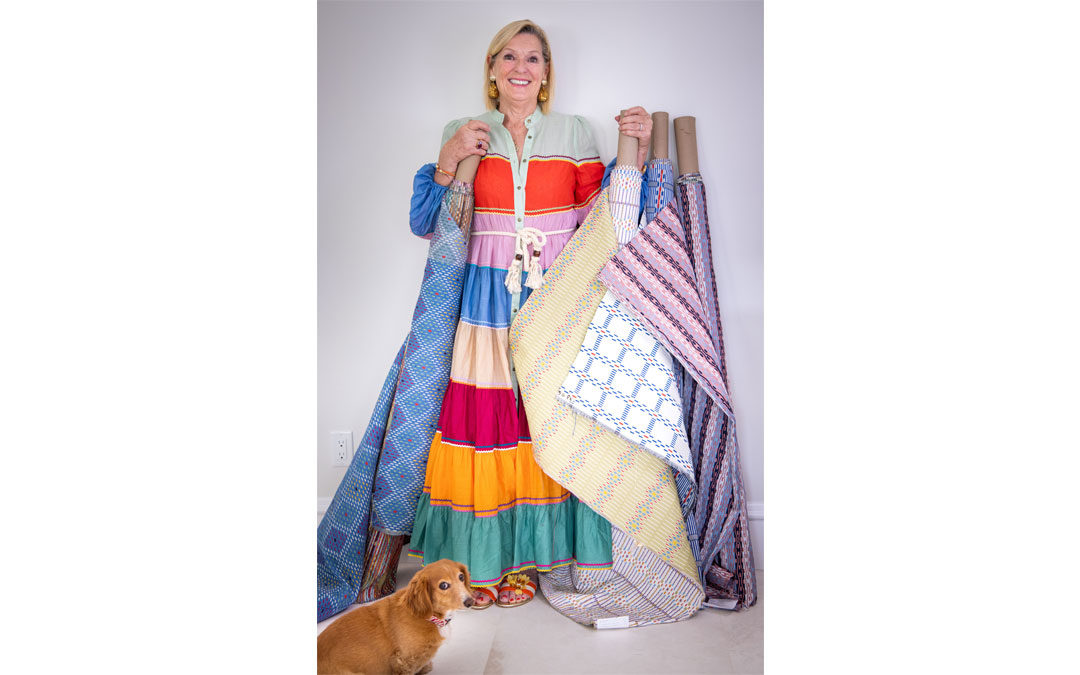Listen to the audio version of this post
While scrolling through my Instagram feed, I saw that Mally Skok, a friend, an amazingly creative interior designer and one of my favorite IG posters, had begun commenting on her feelings, memories and reflections as she and her husband began the process of selling, and then distilling and moving from their home of 22 years.
Mally talked about the joys of the home she had lovingly created and the searing bittersweetness of moving forward while also leaving a piece of yourself behind. She sold and donated furniture and accent pieces that would no longer fit into the new spaces she intended to create; along her journey I was fortunate to acquire a Malawi chair with Mally’s signature fabrics. But more than the things, it was the way she talked about their meaning that was so powerful to me.
After reading one of Mally’s musings in which she talked about being grateful that in the home she was now selling she’d been able to provide her children with rooms of their own, I wondered if her divorce had impacted how she thought about the rooms she created for her children post-divorce. As I read, I knew that a conversation with Mally would inevitably lead to an enlightening perspective (as it always does); it wasn’t long before we found some time to talk about the bearing divorce has on design. Our conversation orbited around Mally’s thought that design needs not be fancy but rather to provide security through the thoughtful expression of love.
At the age of 32, with two young children, Mally prepared to leave her unhappy marriage: although materially comfortable, she had determined she would never be able to fully evolve into her own best person and live her own best life while married to her then husband. Knowing at that time that she’d be moving to a small space in which her children would not have their own rooms, she prepared by buying duplicate duvets for the new beds they’d have and versions of their toys so that when she made her move with them, they would feel familiarity amidst what she knew would be an upheaval in their lives. She didn’t want to mimic their former spaces but she did want to create comfort. It’s a line I’ve see many divorced parents struggle with by focusing on who bought a particular item for a child rather than the child’s attachment and connection to the item. Focusing on the emotional connection to an object and not the object itself seems to be a lesson worth highlighting.
Mally also talked about how, many years later, when her son was a teenager, his room like many a teenager, looked more mayhem than anything of hers you might see on the cover of House Beautiful or the multitude of other Design magazines that often feature her work. What mattered to her at that time was that his room was his own, that it reflected who he was and what gave him comfort. As a parent I know how difficult it can be to let go of our own expectations, and how tidy rooms can morph into a point of contention allowing both parents and teenagers to miss the message underlying the mess. As our conversation meandered, Mally told me that her same son, now a grown man, lives in a meticulous home with intentional design, no doubt having silently noticed and absorbed her visual acuity. We talked further about how all of her now-grown children have adapted their observations, incorporated them into their living spaces and made them their own. She recalled how recently when visiting her daughter, she was greeted by a small bunch of flowers in a vase on her bedside table, a welcome gesture she observed her mother make many times over.
While I expected our conversation would be enlightening, I didn’t know my primary takeaway would be on the importance of emotional connection to design. Even though design is clearly an expression of one’s self, before talking with Mally I hadn’t reflected on the impact of design on children post-divorce. Our conversation helped me recognize how love and rootedness can help children express and authentically integrate themselves during tumultuous times, and it reminded me of the power of one of my favorite passages from Kahlil Gibran.
“Your children are not your children.
They are sons and daughters of Life’s longing for itself.
They come through you but not from you.
And though they are with you yet they belong not to you.
You may give them your love but not your thoughts,
For they have their own thoughts.
You may house their bodies but not their souls,
For their souls dwell in the house of tomorrow, which you cannot visit, not even in your dreams.
You may strive to be like them, but seek not to make them like you.
For life goes not backward nor tarries with yesterday.
You are the bows from which your children as living arrows are sent forth.
The archer sees the make upon the path of the infinite, and He bends you with His might that His arrows may go swift and far.
Let your bending in the archer’s hand be for gladness.
For even as He loves the arrow that flies, so He also loves the bow that is stable.”


